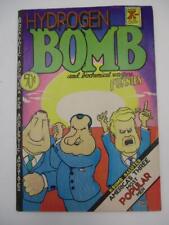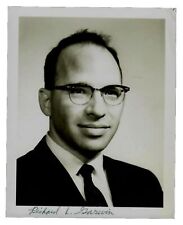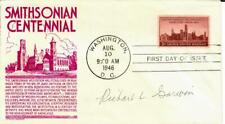"First Hydrogen Bomb" Richard Garwin Hand Signed FDC Dated 1946 For Sale

When you click on links to various merchants on this site and make a purchase, this can result in this site earning a commission. Affiliate programs and affiliations include, but are not limited to, the eBay Partner Network.
"First Hydrogen Bomb" Richard Garwin Hand Signed FDC Dated 1946:
$399.99
Up for sale the "First Hydrogen Bomb" Richard Garwin Hand Signed First Day Cover Dated 1946.
ES-5893E
Richard Lawrence Garwin (born April 19, 1928) is an American physicist, best known as the author of the first hydrogen bomb design. Garwin received his bachelor's degree from the Case Institute of Technology in 1947, and two years later his Ph.D. from the University of Chicago under the supervision of Enrico Fermi at the age of 21. Another of Fermi's students, Marvin L. Goldberger, claims that Fermi said that "Garwin was the only true genius he had ever met". After graduating from the University of Chicago, Garwin joined the physics faculty there and spent summers as a consultant to Los Alamos National Laboratory working on nuclear weapons. Garwin was the author of the actual design used in the first hydrogen bomb (code-named Mike) in 1952.He was assigned the job by Edward Teller, with the instructions that he was to make it as conservative a design as possible in order to prove the concept was feasible. He also worked on the development of the first spy satellites, for which he was named one of the ten founders of national reconnaissance. While at IBM, his work on spin-echo magnetic resonance laid the foundations for MRI; he was the catalyst for the discovery and publication of the Cooley–Tukey FFT algorithm, today a staple of digital signal processing; he worked on gravitational waves; and played a crucial role in the development of laser printers and touch-screen monitors. He has been granted 47 patents and has published over 500 papers. In December 1952, he joined IBM's Watson laboratory, where he worked continuously until his retirement in 1993. He is currently IBM Fellow Emeritus at the Thomas J. Watson Research Center in Yorktown Heights, New York. During his career Garwin divided his time between applied research, basic science, and consulting to the U.S. Government on national-security matters. Parallel to his appointment at IBM, at different periods he held an adjunct professorship in physics at Columbia University; an appointment as the Andrew D. White Professor-at-Large at Cornell University; and a professorship in public policy, and in physics, at Harvard University. He has also been the Philip D. Reed Senior Fellow at the Council on Foreign Relations in New York, NY. Garwin served on the U.S. President's Science Advisory Committee from 1962–65 and 1969–72, under Presidents Kennedy, Johnson, and Nixon.[8] He has been a member of the JASON Defense Advisory Group since 1966. As a member of the Institute for Defense Analyses' Jason Division of U.S. university scientists. on Sat. Feb. 3, 1968, Garwin “traveled to Vietnam” with Henry Way Kendall and several other scientists “to check on the operation of the electronic barrier” he and other Jason scientists developed for the Pentagon to utilize in Indochina, according to The Jasons by Ann Finkbeiner. And, in the 1960s, "Jason scientist Richard Garwin, a nuclear physicist who, years before, helped design the Castle Bravo hydrogen bomb, held a seminar on the SADEYE cluster bomb and other munitions that would be most effective when accompanying the sensors" of the electronic barrier in Vietnam, according to page 205 of Annie Jacobsen's book, "The Pentagon's Brain: An Uncensored History of DARPA, America's Top Secret Military Research Agency," that Little Brown & Company, NY published in 2015. From 1993 to August 2001, he chaired the Arms Control and Nonproliferation Advisory Board of the U.S. Department of State. From 1966 to 1969 he served on the Defense Science Board. He also served on the Commission to Assess the Ballistic Missile Threat to the United States in 1998. He is currently a member of the National Academies' Committee on International Security and Arms Control and has served on 27 other National Academies committees. In 2017, science journalist Joel N. Shurkin published a biography of Garwin, True Genius: The Life and Work of Richard Garwin, in which Shurkin writes about "the most influential scientist you never heard of.

Related Items:
Vtg Hydrogen Bomb Biochemical Warfare Comic Book Funnies Political #1 1st Print
$14.90
"First Hydrogen Bomb" Richard Garwin Hand Signed 4X5 B&W Photo COA
$399.99
"First Hydrogen Bomb" Richard Garwin Hand Signed FDC Dated 1946
$399.99



